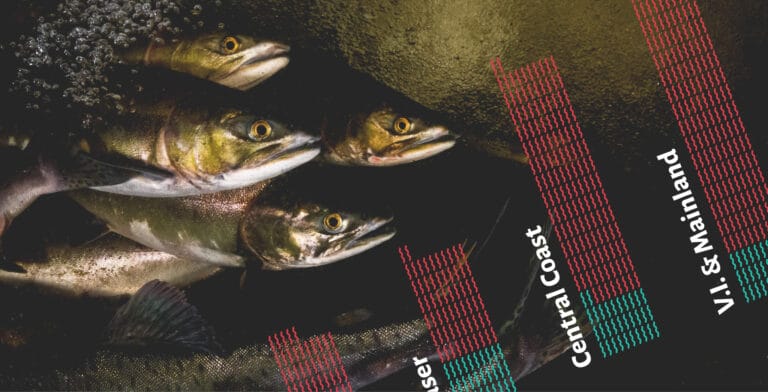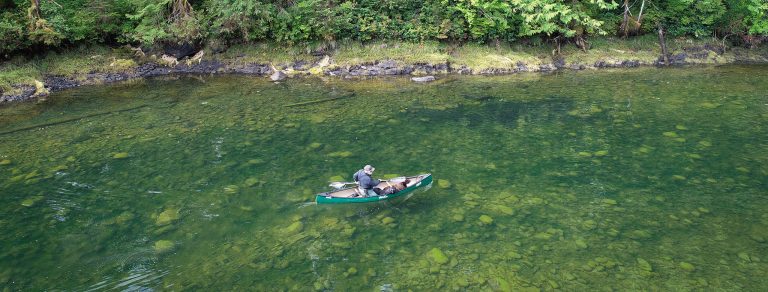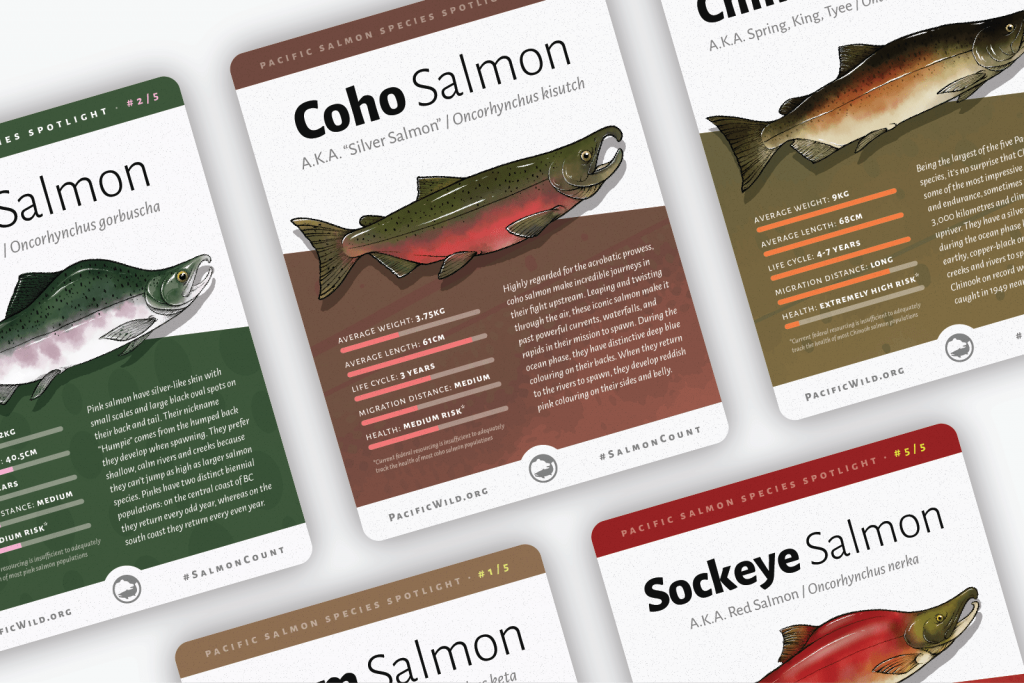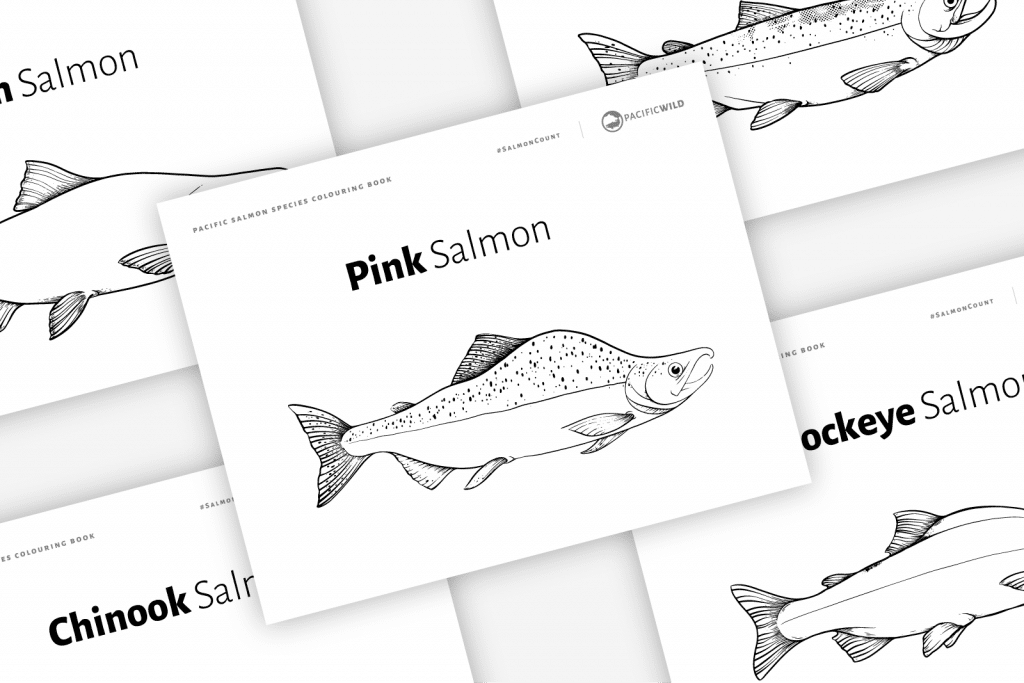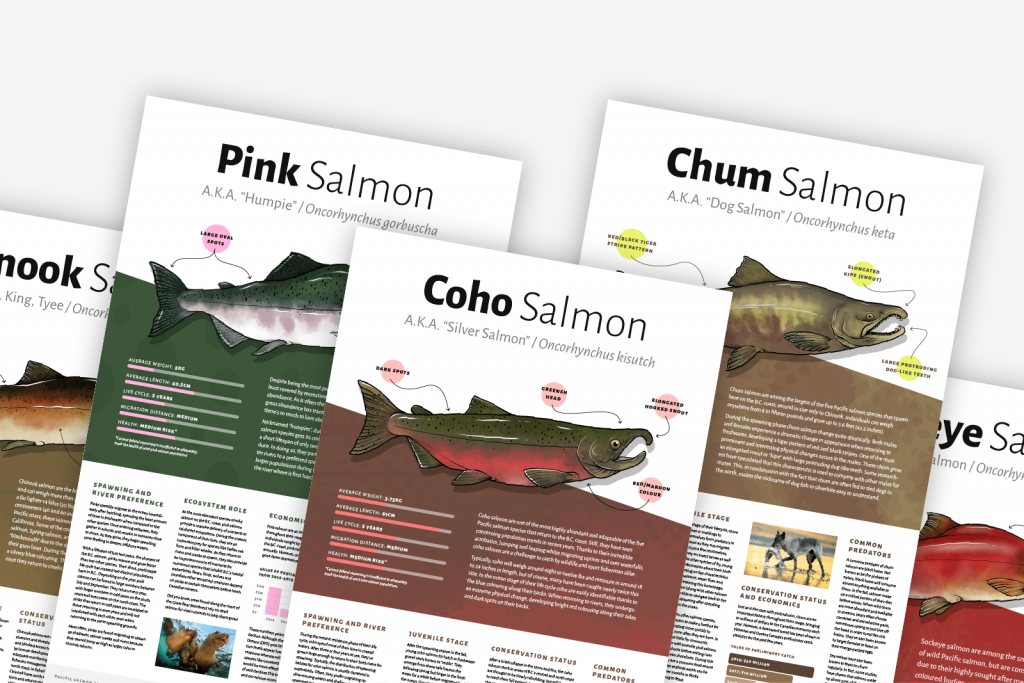The single greatest asset that informs salmon management and conservation on our coast is on-the-ground monitoring done by charter patrolmen (creekwalkers) and through Indigenous Guardian and Fisheries programs. Despite tens of millions of dollars being allocated for wild salmon conservation in B.C., Canada’s federal government has divested from charter patrolmen budgets and is not investing adequate funds into local community and Indigneous monitoring efforts when it should be considered the very foundation of salmon management. Each year, critical management decisions by Fisheries and Oceans Canada (DFO) regarding subsistence, commercial, and recreational fisheries are meant to be made based on estimated annual returns of salmon (the spawner counts). But if fewer than ten per cent of B.C.’s salmon runs are actually monitored, as is the current situation, how is DFO reliably allocating wild salmon for fisheries and broader ecosystem needs? What little data they have is not sufficient in making these decisions.
History of the Charter Patrolmen Program
The basis of stock assessments, a key driver to responsible fisheries management, relies on accurate spawner counts, or enumeration, on the spawning grounds. These surveys using a variety of on-the-ground methods estimate the size of the next generation of fish, and are carried out by charter patrolmen (creekwalkers) and local Indigenous Nations monitoring programs. These activities include ground, aerial visual, and mark recapture surveys. Despite its responsibility to ensure these activities are completed, DFO’s Stock Assessment and Research Division are limited in capacity and, as such, are unable to count the fish in many watersheds, particularly throughout the remote areas of the Great Bear Rainforest on the North and Central Coast.
Charter patrolmen, colloquially known as creekwalkers, have been contracted annually by DFO since the mid-twentieth century. Since this time, they’ve provided a variety of services necessary to assist with the assessment and management of salmon populations throughout the province. Up until 1994, creekwalkers assisted DFO Fisheries Managers, who were responsible for management activities in specific areas. Over time, a loss of charter patrolmen throughout B.C. — 150 in 1949 down to 40 in 1979 and just two on the North Coast today — has made it more difficult for Fisheries Managers to obtain all the data required to make informed salmon management decisions.
number of Charter Patrolmen on the bc north coast
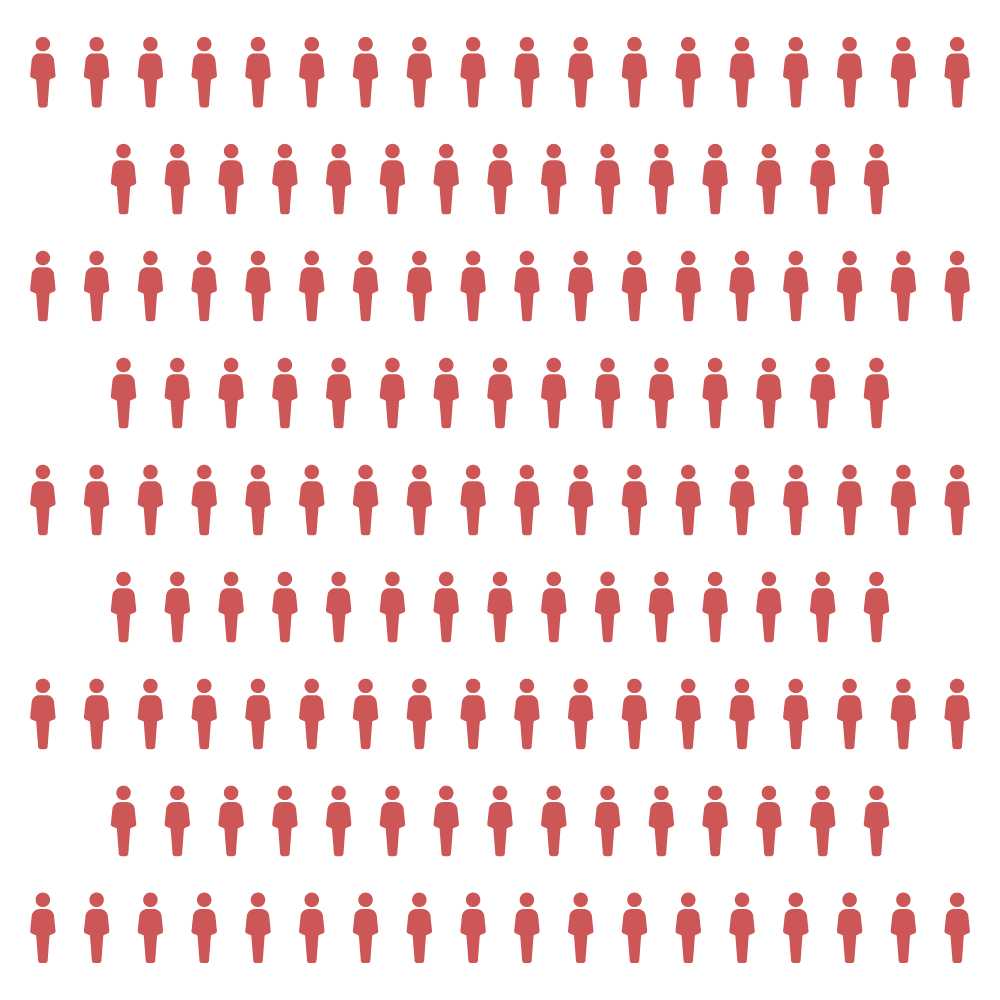
1949
150 Charter Patrolmen

1979
40 Charter Patrolmen

2020
2 Charter Patrolmen
Even when data is available, with many streams experiencing record low returns, it is clear through persistent year-over-year declines in salmon populations that this evidence is not being used in management decisions. In the absence of a precautionary approach to salmon quota allocations, this lack of information has contributed to overharvesting year after year and has left knowledge gaps in historical data related to catch, escapement, migration patterns, and timing — all of which can never be recovered. According to DFO’s 1986 Operational Framework for the Area 6 Sub-district, the management duties that have suffered the most include the spawning and stream assessment (i.e. escapement data), which serves as the basis of the entire fisheries management regime and is used to predict future run sizes, as well as pre-season and in-season management measures (DFO 1986). As an example, one creekwalker for Area 6-South retired in 2016 and his position was not filled, leaving critically important salmon streams without annual spawning data, while mixed-stock net fisheries continue to target these threatened populations of salmon. This is a prime example of how significant knowledge gaps in long-term data sets are increasing at a time when salmon need more funding, monitoring and attention, not less.
In recent decades, DFO’s Conservation and Protection program, which contracts creekwalkers to do this vital work, has undergone several cutbacks in budget, staff, and overall capacity. This has coincided with reorganizations in DFO and a reallocation of duties in departmental branches. When the Canandian Coast Guard (CCG) switched from being a program under Transport Canada to DFO in the 1990s, CCG took over the DFO fleet responsible for travelling through the coastal waters of the North and Central Coast to conduct spawner surveys. Prior to this, the surveys were the responsibility of DFO Fisheries Managers and the creekwalkers they contracted. Whereas in previous years, DFO had 14 patrol vessels on the North Coast, that number declined to 6 in 1994 and today there is only one. Currently, the Resource Management division and Stock Assessment division provide limited funding for creekwalkers to conduct their surveys, and all management regions on the North and Central Coasts have seen budget and participation cutbacks in recent years.
Aside from DFO-contracted creekwalkers, Indigenous fisheries monitors and Guardians continue to push forward in monitoring efforts, patrolling the waters in their territories. They work on an observe, record, report basis and play an essential role in informing DFO about current population trends. However, these communities are stretched thin and need more funding and support to continue this critical work.
Now What?
There is an urgent need for increased funding and efforts to properly manage and assess the Pacific salmon populations returning along the North and Central Coast. Many of the creekwalkers and Indigenous Guardian and Stewardship programs tasked with conducting spawning surveys are doing so with limited capacity and funding, but also without meaningful co-management agreements to ensure conservation goals remain a priority. Wild salmon need help across our entire coast. To ensure the sustainability of salmon populations, as well as the economic, social, and cultural values they provide, DFO must take action on the salmon emergency and better support salmon monitoring activities. It must also ensure that more conservation-focused decision making for salmon management is baked on the latest population data. The future of wild salmon is counting on it.
